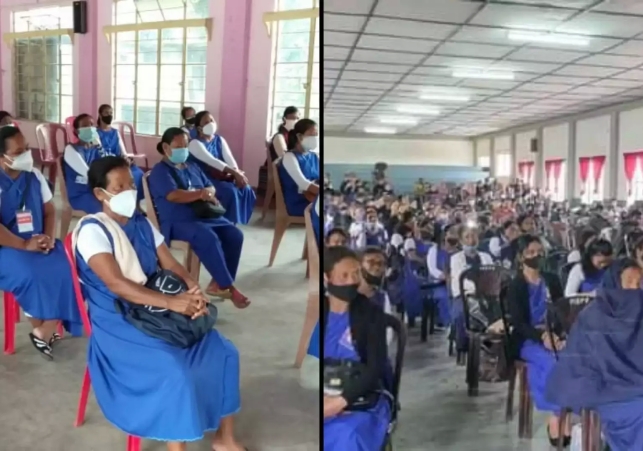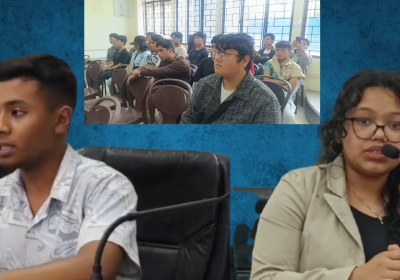Community Based Health Incentive Scheme for ASHA

The Meghalaya Health Department has decided to increase the fixed incentive of the ASHAs
from the existing Rs. 2000 to Rs. 3000, under a new scheme called the Community Based
Health Incentive Scheme for ASHA. This decision was taken in a meeting chaired by the
Meghalaya Health Minister Dr. Ampareen Lyngdoh, along with senior State Health officials on
Wednesday, in a discussion held with the office functionaries of the Meghalaya ASHA Workers’
Union at Conference Hall, Main Secretariat, Shillong.
The Health Minister informed that the State is annually spending about Rs. 17 crores on Fixed
incentives @ Rs. 2000 per month on the honorarium given to the ASHAs in addition to around
Rs.22 to 23 Crores annual spending from NHM as performance-based incentives. The fixed
incentives for the ASHAs was initiated in April 2021 because about 70 % of villages in
Meghalaya have a small population and therefore, in order to ensure equity and basic minimum
financial support for all ASHAs, the state introduced the fixed incentive system (in place of
existing performance linked schemes).
Meghalaya Health Minister stated that a new scheme will now come into effect which will be
named as the Community Based Health Incentive Scheme for ASHA. Under this scheme
the Fixed incentive of ASHAs will be increased from Rs. 2000 to Rs. 3000. Under this, the
Village Health Councils (VHCs) headed by the headmen at the community level will be
responsible for reviewing and evaluating the performance of ASHAs in fulfilling the specified
health milestones. She also informed the Hon’ble Chief Minister of the State Shri. Conrad K.
Sangma has agreed in principle that an additional amount of Rs 1000 can be considered and
added to the existing Rs 2000 fixed incentive from the State government.
Under the new scheme, the revised incentives for ASHAs will be based on ASHAs contribution
and their efforts along with VHCs and Health Teams of PHC/CHC/Sub-centers to improve
community-level health indicators. These include: Making all out efforts to save the lives of
mothers and children, Screening and Referral of NCD Cases, Ensuring 100% Full Immunization
Coverage of new-borns up to 1 year of age and Ensuring 100% ANC Coverage for Pregnant
Mothers, among others.
Health & Family Welfare Department, Room No. 502. Additional Secretariat Email: healthdeptt502@gmail.com
It was also informed that a dedicated Committee will be put in place for streamlining the newly
announced Community Based Health Incentive Scheme for ASHA. The committee will
comprise one ASHA representative from each district, a representative from VHC from each
district, NHM Officials, and State Officials. It will also look into all the grievances put forth by the
ASHAs during the discussion in today’s meeting.
Speaking during the discussion, Sampath Kumar, IAS, Principal Secretary, Health & Family
Welfare Department, Government of Meghalaya reiterated that the State has taken up the
concerns and issues raised by ASHA workers with utmost sincerity and dedication. He added
that the State has been working strategically to address the systemic issues and to address the
challenges of the community-level health workers. The State played a pivotal role in
implementing the "ASHA First” application for seamless payment of ASHA incentives and to
avoid delays in payments.
He also emphasized that ASHAs are community volunteers identified by their respective village
communities, and therefore the spirit of volunteerism has to be kept alive with an aim to save
peoples’ lives by assisting health teams of their respective health facilities. The primary
objective of ‘saving lives’ should not be forgotten. He also informed that in order to ensure that
the ASHAs are not overburdened, the Health Department had also recently issued an executive
order emphasizing the role of Medical officers, Mid Level Health Care Providers and the ANMs
in each of the health facilities for visiting villages more frequently to take healthcare services
closer to the people.







